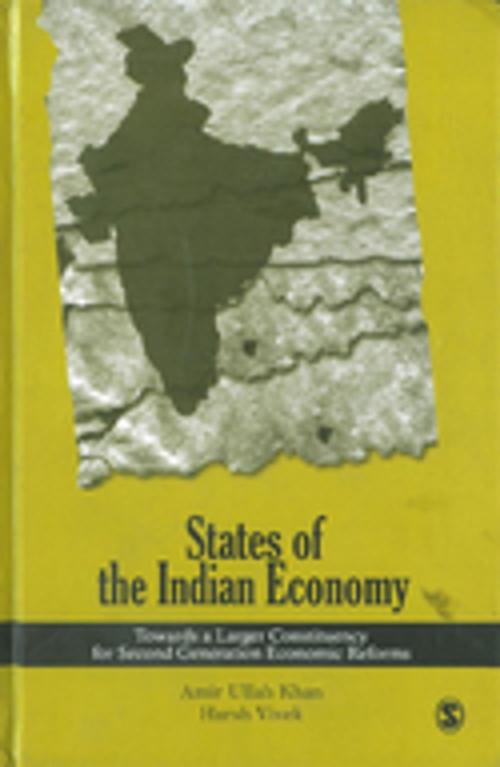States of the Indian Economy
Towards a Larger Constituency for Second Generation Economic Reforms
Business & Finance, Economics, Economic Development, Nonfiction, Reference & Language, Reference, Social & Cultural Studies, Social Science| Author: | Amir Ullah Khan, Harsh Vivek | ISBN: | 9789352803248 |
| Publisher: | SAGE Publications | Publication: | December 4, 2007 |
| Imprint: | Sage Publications Pvt. Ltd | Language: | English |
| Author: | Amir Ullah Khan, Harsh Vivek |
| ISBN: | 9789352803248 |
| Publisher: | SAGE Publications |
| Publication: | December 4, 2007 |
| Imprint: | Sage Publications Pvt. Ltd |
| Language: | English |
The phenomenal rise of India in the global economy has been attributed to a whole host of factors, the major ones being the focus on economic reforms and the demographic dividend that India currently enjoys due to its demographic transition. The large pool of human capital - a young, talented and well-educated workforce - is one of the major drivers of economic growth in the country. Rapid strides in knowledge-based industries, especially information technology, biotechnology and pharmaceuticals; rejuvenation of the manufacturing sector, revolution in the agriculture sector; and, resurgence in exports have made India one of the fastest growing economies in the world. A market-oriented approach to development, opening up of the economy and the growing economies of scale and scope for Indian enterprises, access to 'modern' technology - especially information technology - and growth in entrepreneurship have made India a sought-after destination for foreign investment.
The authors argue that this situation is a result of the implementation of a set of first generation economic reforms, initiated primarily by the Central government but the responsibilities of which are now on the State governments. To carry the second generation of reforms forward in a meaningful manner, action has now shifted to the states.
With this background, this book primarily examines the following:
- The state of the Indian economy after one and a half decades of liberalisation and its role in the fast changing global economy
- The economic performance of various Indian states during this period
- Sectors that have done well and those that need substantial improvement in terms of adoption and implementation of reform measures.
The phenomenal rise of India in the global economy has been attributed to a whole host of factors, the major ones being the focus on economic reforms and the demographic dividend that India currently enjoys due to its demographic transition. The large pool of human capital - a young, talented and well-educated workforce - is one of the major drivers of economic growth in the country. Rapid strides in knowledge-based industries, especially information technology, biotechnology and pharmaceuticals; rejuvenation of the manufacturing sector, revolution in the agriculture sector; and, resurgence in exports have made India one of the fastest growing economies in the world. A market-oriented approach to development, opening up of the economy and the growing economies of scale and scope for Indian enterprises, access to 'modern' technology - especially information technology - and growth in entrepreneurship have made India a sought-after destination for foreign investment.
The authors argue that this situation is a result of the implementation of a set of first generation economic reforms, initiated primarily by the Central government but the responsibilities of which are now on the State governments. To carry the second generation of reforms forward in a meaningful manner, action has now shifted to the states.
With this background, this book primarily examines the following:
- The state of the Indian economy after one and a half decades of liberalisation and its role in the fast changing global economy
- The economic performance of various Indian states during this period
- Sectors that have done well and those that need substantial improvement in terms of adoption and implementation of reform measures.















